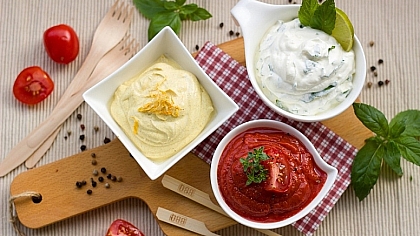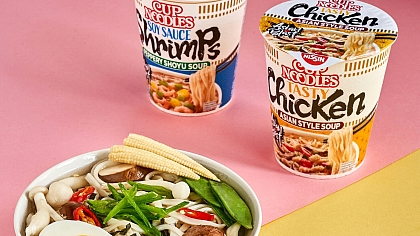
Dubai Chocolate: The Viral Fusion of Pistachio, Knafeh, and Chocolate
The Birth of a Viral Chocolate Bar
Dubai, a city known for its lavish lifestyle and innovative cuisine, has recently seen the rise of a unique and viral creation: a chocolate bar that blends the rich flavours of the Middle East with a global favourite. This confection, known as the Dubai Chocolate Bar, is a groundbreaking fusion of chocolate, pistachios, and knafeh, a delicate and crispy filo dough, inspired by the traditional Middle Eastern dessert. The bar’s journey from a craving-fueled idea to a viral sensation has captivated dessert lovers worldwide, leading to its recreation in various forms across social media and culinary circles.
This chocolate bar isn’t just another treat—it’s a tribute to the region's rich culinary heritage, a new take on the classic KitKat, and an expression of the culinary creativity of Sarah Hamouda, the founder of Fix Dessert Chocolatier in Dubai. What started as a pregnancy craving has evolved into a viral sensation, making waves not only in Dubai but across the globe.
What Is Dubai Chocolate? A Flavourful Fusion
The Ingredients: A Middle Eastern Twist on Chocolate
The Dubai chocolate bar is a unique concoction that marries the sweetness of milk chocolate with the texture and flavour of Middle Eastern staples such as pistachios and knafeh. It’s a confectionary masterpiece that blends familiar Western and Eastern flavours into a harmonious treat. Let’s break down the key ingredients that give this chocolate bar its distinctive profile:
- Chocolate – The foundation of the Dubai chocolate bar is rich milk chocolate, providing the smooth and creamy texture that forms the bar’s outer layer.
- Pistachios – A key ingredient in the bar, pistachios bring a nutty, slightly sweet flavour, offering both a crunchy texture and an aromatic taste.
- Knafeh (Kunafa) – The star of the Dubai chocolate bar is knafeh, a Middle Eastern dessert made with thin, crispy filo dough (kataifi) and filled with cheese or cream. In this case, knafeh replaces the traditional wafer found in a KitKat, adding an intriguing crunch and a burst of flavour that contrasts beautifully with the chocolate and pistachios.
- Nougat – The bar's filling is enhanced with a soft, sweet nougat, further enhancing its texture and depth of flavour.
The Story Behind the Chocolate Bar: Sarah Hamouda’s Creative Spark
A Craving-Driven Creation
The inception of the Dubai chocolate bar can be traced back to Sarah Hamouda, a Dubai-based chocolatier and the founder of Fix Dessert Chocolatier. The idea for this innovative chocolate bar came from a place of personal cravings during Hamouda’s pregnancy. At the time, she wanted something that was more than just a regular chocolate bar—she sought a treat that would encapsulate both her love for chocolate and her connection to her Middle Eastern roots.
Drawing inspiration from the traditional dessert knafeh, which she had grown up enjoying, Hamouda combined the rich, gooey sweetness of chocolate with the crunchy, delicate filo dough of knafeh. The result was a bar that offered a new and exciting experience for chocolate lovers, one that was both familiar and novel.
Cultural Inspiration
Hamouda’s creation wasn’t just about satisfying her cravings; it was also a celebration of the rich culinary traditions of the Middle East. Knafeh, a beloved dessert made from crispy filo dough and often served with sweet syrup, is an iconic dish in many Middle Eastern countries. By incorporating this into a chocolate bar, Hamouda was able to honour her heritage while offering something new and contemporary to a global audience.
Dubai Chocolate’s Meteoric Rise to Fame

Viral Sensation on Social Media
Once the Dubai chocolate bar made its debut, it quickly went viral, captivating the attention of food enthusiasts and chefs worldwide. The bar's unique fusion of flavours, its luxurious ingredients, and its striking presentation made it a perfect fit for the social media age. Instagram, in particular, played a significant role in the chocolate bar’s meteoric rise. Influencers, food bloggers, and even home cooks began recreating their versions of the Dubai chocolate bar, each adding their twist to the recipe.
This online buzz didn’t just stop at the chocolate bar itself. The dessert’s innovative approach to combining Middle Eastern ingredients with a popular Western treat sparked a wave of culinary creativity. Chefs around the world began experimenting with the Dubai chocolate bar’s elements, turning it into popsicles, cupcakes, and even paczki (Polish pastries). The bar’s viral success created a global phenomenon, bringing attention to the possibilities of fusing traditional flavours with modern confectionery.
Recreation by Other Chefs
The success of the Dubai chocolate bar led to an influx of variations from chefs all over the world. Some opted to create decadent popsicles using pistachio cream and chocolate, while others infused the flavours of knafeh into cakes and pastries. The versatility of the Dubai chocolate bar, with its combination of crunchy filo dough, rich chocolate, and nutty pistachios, made it a perfect base for numerous interpretations. Social media was flooded with these recreations, making the Dubai chocolate bar not only a treat to eat but also a source of culinary inspiration.
Where to Buy Dubai Chocolate Bars: The Leading Brands
As the Dubai chocolate bar continues to soar in popularity, several chocolatiers have created their own versions of the treat, offering different takes on the combination of chocolate, pistachios, and knafeh. These brands have tapped into the global craze, creating products that showcase the unique flavours of Dubai chocolate in various forms and sizes.
-
Dubai Chocolate Co.
The Dubai Chocolate Co. offers a 200g bar of premium milk chocolate filled with crunchy pistachios and knafeh. This bar brings together the rich creaminess of milk chocolate with the crunch of pistachios and the signature flavour of knafeh, making it a perfect option for those looking for an authentic taste of Dubai’s viral chocolate bar. -
Cocoa Cabana
Cocoa Cabana’s version takes the Dubai chocolate bar to the next level. Their 500g milk chocolate bar features a rich pistachio crème and pistachio nut paste, further complemented by toasted kunafa (the Arabic name for knafeh). The combination of smooth pistachio filling with the crispy kunafa creates a balanced and indulgent chocolate experience. -
Worths Bakery
Worths Bakery, known for its high-quality artisanal chocolates, offers a 450g milk chocolate bar with a generous filling of pistachios and knafeh. Their version focuses on the interplay between crunchy and creamy textures, providing a satisfying bite that mirrors the viral bar’s signature features.
Each of these brands offers a distinct take on the original concept, providing chocolate lovers with various options to indulge in the flavours of Dubai’s most famous chocolate bar.
How the Dubai Chocolate Bar Has Inspired Global Trends

A Global Culinary Movement
The Dubai chocolate bar’s viral success isn’t just a passing trend—it has ignited a larger movement toward the fusion of global ingredients in creative new forms. The incorporation of knafeh, a dessert beloved in the Middle East, into a modern chocolate bar speaks to a growing trend in global cuisine: the mixing of traditional flavours with contemporary techniques.
Many chefs around the world have looked to this trend to innovate within their dessert repertoires. The Dubai chocolate bar has inspired variations that include not only chocolate but also the integration of regional ingredients, such as Turkish delight, halva, or rose water, into chocolate bars and confections.
Middle Eastern Ingredients Gaining Global Popularity
In addition to sparking creative recipes, the Dubai chocolate bar’s popularity has also contributed to the growing recognition of Middle Eastern ingredients on the global stage. Pistachios, saffron, and knafeh have become increasingly common in international dessert menus, and many chefs are seeking to explore the depths of Middle Eastern sweets and incorporate them into their offerings. This cross-cultural exchange is transforming the global dessert landscape, with the Dubai chocolate bar symbolising this exciting culinary evolution.
A New Era of Chocolate
The Dubai chocolate bar, with its innovative blend of chocolate, pistachios, and knafeh, has captured the attention of chocolate lovers and chefs worldwide. What began as a personal craving for something special has blossomed into a viral sensation that has transcended borders and inspired chefs to experiment with new forms of fusion desserts.
As the Dubai chocolate bar continues to make waves across social media and dessert menus, it marks the beginning of a new era in chocolate, where traditional flavours from the Middle East meet modern, global confectionery trends. Whether you’re in Dubai or halfway across the world, this chocolate bar is a must-try indulgence that celebrates both innovation and heritage.
How to Make Dubai Chocolate: A Decadent Fusion of Flavours
Creating a homemade version of the Dubai chocolate bar is a delightful process that captures the unique fusion of chocolate, pistachios, and crispy knafeh. Here's a step-by-step guide to making this viral treat:
Dubai Chocolate Recipe

Ingredients
For the Chocolate Shell:
- 300g milk chocolate (high quality, for melting)
For the Filling:
- 1 cup pistachios (finely chopped or ground)
- 1 cup knafeh (or kataifi) dough, lightly toasted
- ½ cup pistachio cream or paste (store-bought or homemade)
- ½ cup nougat (optional, for added chewiness)
- 2 tbsp honey or sugar syrup (to bind the knafeh dough)
For the Decoration (optional):
- Crushed pistachios
- Edible gold leaf
Equipment
- Chocolate mould (rectangular bar or similar shapes)
- Double boiler or microwave (for melting chocolate)
- Small frying pan or baking tray (for toasting knafeh dough)
Step 1: Toast the Knafeh Dough
- Take the knafeh dough (also known as kataifi) and break it into small, manageable pieces.
- In a dry frying pan, toast the knafeh over low heat until it turns golden and crispy. Stir constantly to avoid burning.
- Remove from heat and let it cool. Optionally, mix with 2 tablespoons of honey or sugar syrup to add sweetness and help the dough bind slightly.
Step 2: Prepare the Pistachio Filling
- In a bowl, mix the pistachio cream or paste with half of the chopped pistachios.
- If using nougat, chop it into small pieces and blend it with the pistachio mixture.
- Add the toasted knafeh dough to the mixture, combining until evenly distributed.
Step 3: Melt the Chocolate
- Break the milk chocolate into small pieces and melt it using a double boiler or in the microwave in 15-second intervals, stirring in between to prevent overheating.
- Ensure the chocolate is smooth and fully melted.
Step 4: Coat the Mould
- Pour a thin layer of melted chocolate into the chocolate mould, ensuring it evenly coats the bottom and sides. Tap the mould gently to remove air bubbles.
- Refrigerate for 10 minutes or until the chocolate sets.
Step 5: Add the Filling
- Spoon the pistachio and knafeh mixture into the chocolate mould, pressing gently to ensure an even layer.
- Leave a small gap at the top for the final chocolate layer.
Step 6: Seal with Chocolate
- Pour the remaining melted chocolate over the filling, spreading it evenly to cover the mixture completely.
- Gently tap the mould again to remove air bubbles.
Step 7: Set and Decorate
- Place the mould in the refrigerator for at least 30 minutes, or until the chocolate is fully hardened.
- Once set, carefully remove the bars from the mould.
- For a finishing touch, sprinkle crushed pistachios on top or add edible gold leaf for a luxurious look.
Enjoy Your Dubai Chocolate Bar!
Your homemade Dubai chocolate bar is now ready to enjoy! It captures the luxurious crunch of knafeh, the creamy richness of pistachio filling, and the smoothness of milk chocolate—a perfect treat inspired by the viral sensation.












